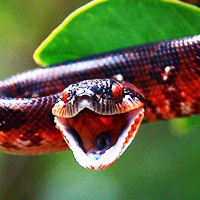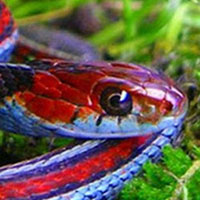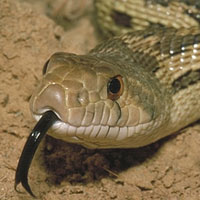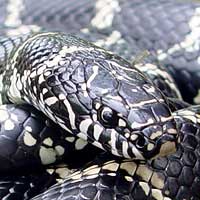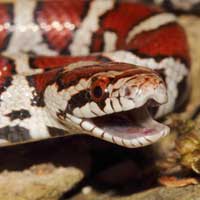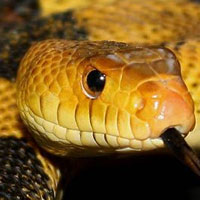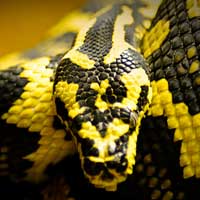Unveiling the Beauty of the Malaysian Blood Python
The scientific name of the Malaysian Blood Python is Python brongersmai, and it belongs to the Pythonidae family, which consists of non-venomous constricting snakes commonly referred to as pythons.
Scientific Name: Python brongersmai
Snake Family: Pythonidae
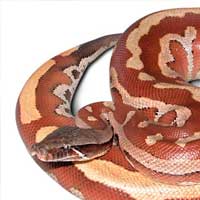
Introduction to the Malaysian Blood Python
The Malaysian Blood Python (Python brongersmai) is a strikingly patterned, non-venomous snake native to Southeast Asia. Known for its vivid coloration and robust build, this species is a favorite among reptile enthusiasts. Despite its somewhat intimidating appearance, the Malaysian Blood Python can be a rewarding pet for experienced keepers who understand its unique care requirements. This guide explores its natural habitat, diet, behavior, and care needs in detail.
Discovering the Natural Habitat of the Malaysian Blood Python
The Malaysian Blood Python thrives in tropical and subtropical regions of Southeast Asia. Its habitat provides the high humidity and warmth essential for its survival.
- Geographic Range: Found in Malaysia, Indonesia, Thailand, and nearby regions.
- Preferred Habitat: Swamps, marshes, and lowland forests.
- Climate: Warm and humid with temperatures between 75°F and 88°F.
| Region | Habitat Type | Key Features |
|---|---|---|
| Malaysia | Swamps | High humidity, abundant prey |
| Indonesia | Lowland Forests | Dense vegetation, stable temperatures |
| Thailand | Marshes | Wet conditions, ample hiding spots |
Diet and Feeding Habits of the Malaysian Blood Python
The Malaysian Blood Python is a carnivorous predator, feeding primarily on small mammals and birds in the wild. In captivity, its dietary needs are straightforward but require consistency.
- Natural Diet: Rodents, birds, and occasionally amphibians.
- Feeding Frequency:
- Juveniles: Every 5-7 days for optimal growth.
- Adults: Every 10-14 days depending on size and activity level.
- Captive Feeding Tips:
- Offer pre-killed, thawed rodents to ensure safety.
- Feed in the evening to align with their nocturnal hunting instincts.
- Monitor for signs of overfeeding or obesity.
Behavior and Temperament of the Malaysian Blood Python
The Malaysian Blood Python is known for its calm demeanor when handled correctly, although it can be defensive if stressed. Understanding its behavior is crucial for a positive experience.
- Activity Patterns: Primarily nocturnal, becoming active during the evening and night.
- Defensive Behavior: May hiss or strike when threatened but generally adapts to regular handling.
- Interaction with Humans: With patience and consistency, they can become docile and manageable pets.
Respecting their natural instincts and providing a stress-free environment will ensure a healthier and happier snake.
Health and Lifespan of the Malaysian Blood Python
The Malaysian Blood Python can live 20-25 years in captivity with proper care. Maintaining their health requires attention to their environment and diet.
- Common Health Issues:
- Respiratory infections caused by improper humidity or temperature.
- Shedding problems due to insufficient humidity.
- Parasitic infestations such as mites or ticks.
- Preventive Measures:
- Maintain humidity levels between 60-80%.
- Provide a temperature gradient with basking spots at 88°F-92°F.
- Ensure a clean enclosure and routine health checks.
Reproduction and Breeding of the Malaysian Blood Python
The Malaysian Blood Python is oviparous, laying eggs during the breeding season. Successful breeding in captivity requires careful environmental control and monitoring.
- Mating Season: Typically during the cooler months of the year.
- Clutch Size: 10-30 eggs per clutch.
- Incubation Period: 60-70 days at temperatures of 86°F-88°F.
- Breeding Tips:
- Simulate seasonal changes to encourage mating behavior.
- Provide a nesting box with appropriate substrate for egg-laying.
- Monitor incubation conditions to ensure healthy hatchlings.
Handling and Caring for a Malaysian Blood Python
Handling and caring for a Malaysian Blood Python requires patience and attention to detail. With proper care, they can thrive in captivity and become a rewarding pet.
- Enclosure Requirements:
- Minimum size: 4’ x 2’ x 2’ for adults.
- Include secure hiding spots, climbing branches, and a water dish for soaking.
- Maintain proper lighting and temperature gradients.
- Handling Tips:
- Handle gently and support the snake’s entire body.
- Avoid handling during shedding or immediately after feeding.
- Wash hands before and after handling to maintain hygiene.
By meeting their specific needs, Malaysian Blood Pythons can provide years of fascination and enjoyment for their keepers.
Other Snakes In This Species
 Amethystine Python
Amethystine Python Ball Python
Ball Python Black-Headed Python
Black-Headed Python Boelens Python
Boelens Python Borneo Blood Python
Borneo Blood Python Burmese Python
Burmese Python Burrowing Python
Burrowing Python Centralian Python
Centralian Python Childrens Python
Childrens Python Coastal Carpet Python
Coastal Carpet Python Diamond Python
Diamond Python Green Tree Python
Green Tree Python Indian Python
Indian Python Inland Carpet Python
Inland Carpet Python Jungle Carpet Python
Jungle Carpet Python Macklots Python
Macklots Python Malaysian Blood Python
Malaysian Blood Python Olive Python
Olive Python Pygmy Python
Pygmy Python Reticulated Python
Reticulated Python Ringed Python
Ringed Python Rock Python
Rock Python Rough Scaled Python
Rough Scaled Python Spotted Python
Spotted Python Sumatran Blood Python
Sumatran Blood Python Timor Python
Timor Python White Lipped Python
White Lipped Python
